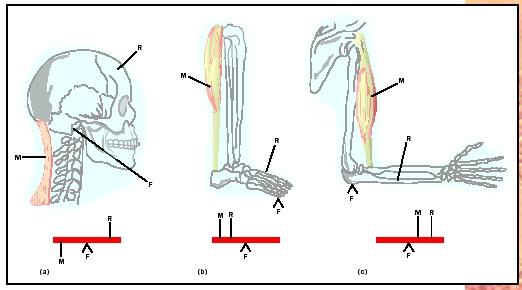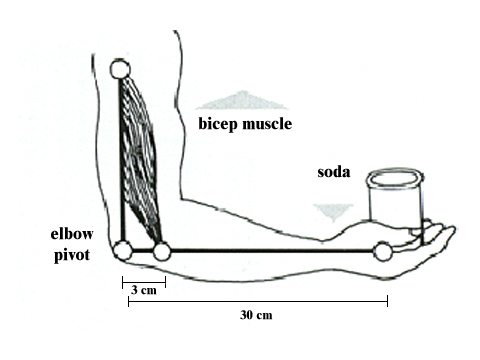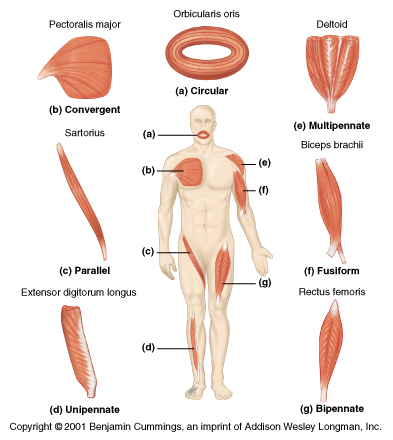Cards In This Set
| Front | Back |
|
Fulcrum
|
The point about which the lever pivots.
|
|
Moment Arm
|
Also called the lever arm, force arm, or torque arm.
|
|
Agonist
|
Muscle that causes shortening, contraction.
|
|
Antagonist
|
Muscle that relaxes to allow agonist muscle to contract.
|
|
Synergist
|
Muscles that assist the agonist during the movement.
|
|
Stabilizer
|
Aids in the agonist in performing the desired movement.
|
|
First Class Lever
|
 A lever in which the muscular force and resistance force act on OPPOSITE sides of the fulcrum. |
|
Second Class Lever
|
A lever in which the muscular force and resistance force act on the SAME side of the fulcrum, but the resistance force acts at a point closer to the fulcrum than the muscular force. (Ex. Plantar Flexion)
|
|
Third Class Lever
|
 A lever in which the muscular force and resistance force act on the SAME side of the fulcrum, but the muscular force acts at a point closer to the fulcrum than the reistance force. |
|
Contractile Component
|
Contains actin and myosin filaments
|
|
Series Elastic Compnent
|
The structures that, when stretched, have the ability to store energy that may be released upon an immediate concentric muscle action. Tendons store elastic energy. Decreases energy expenditure. Increases muscular efficiency.
|
|
Pennate Muscles
|
Show featherlike arrangements of the muscle fibers in which the fibers lie at some angle relative to the overall direction of the muscle contraction.
|
|
Pennation Angle
|
 The angle between the muscle fibers and an imaginary line extending from the muscle's origin to its insertion. |
|
Parallel Elastic Component
|
Passive muscle structures like the epomysium, perimysium, etc. Force exerted by the relaxed muscle when it is stretched.
|



